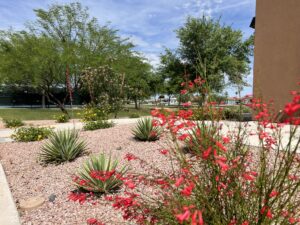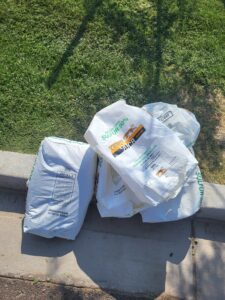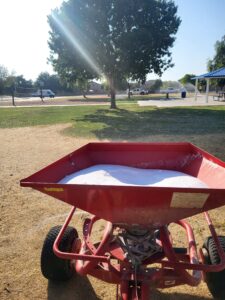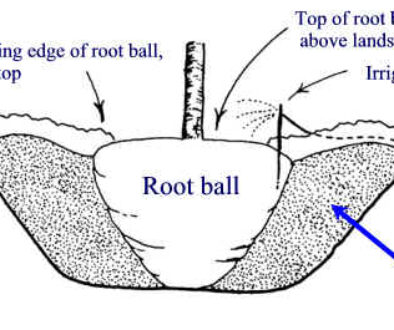Fertilizer and Heat – Don’t Burn the Roots!
Summers are very difficult for trees, shrubs, and turf in the Sonoran Desert. In order to survive, they need much more water than in cooler times of year, and this increased frequency of water has an inconvenient side-effect: loss of nutrients. The increased water dispersal can literally flush away vital minerals and compounds from the soil, leaving plants without resources they need to create and maintain healthy leaves. Additionally, the salty nature of our treated/reclaimed water can raise the pH of the already highly alkaline soil of the desert. When the pH in the soil becomes too high, many nutrients become chemically trapped in the soil and cannot absorb into the plants that need them. You may think that the solution to this is simply to add more fertilizer to your plants – but it’s not that simple. Quantity doesn’t make quality.

Fertilizers, especially inorganic ones, are composed of chemicals and minerals. In alkaline soil, many of these chemicals won’t break down just by adding water. This leaves them lingering in the dirt, increasing the concentration of heavier particles in the ground. When this is paired with months of high heat, these lingering chemicals can start to burn the fine-hair roots of your plants. If you pour these chemicals into the root space of any kind of plant – tree, shrub, cactus, grass – with a combination of high temperature and overly alkaline soil, you can cause significant damage.
So, what can be done? The first strategy, which applies to trees and shrubs, is to follow the “Memorial Day – Labor Day” Rule. This is just a convenient way to remember NOT to fertilize trees and shrubs between Memorial Day and Labor Day, the hottest period of the year. It’s also a way to maximize the healthy nutrient absorption by making sure to do your final spring fertilizing as close to Memorial Day as you can get so your plants will have the best shot of making it through the summer without developing a mineral deficiency.



The second strategy, which works for trees and shrubs but is most often used for grass, is to apply substances that lower soil pH. The most common choices used in Arizona are powders of gypsum or soil sulfur. Apply and water in a batch of gypsum or sulfur, then wait. Often, existing nutrients in the soil which were previously trapped in salts will be freed and your turf or shrubs will start looking healthier. If foliage quality doesn’t improve a month after the pH is lowered, apply a gentle, ORGANIC fertilizer. Organic fertilizers break down much easier and are much less likely to burn roots in the heat.
The most common nutrients missing from desert soil are Nitrogen and Iron, but every area’s soil is different. Some have lower or higher phosphate content, others lack Boron, Manganese or Magnesium. A proper soil analysis is the best way to find out exactly what your property’s soil lacks or has in abundance. Ask the Maricopa County Cooperative Extension (https://extension.arizona.edu/maricopa) for some soil analysis options. What you’ll certainly find in common with most properties in the Sonoran Desert is an alkaline pH with lots of salts present. Be careful what you do to your plants in the heat!
Finally, remember: While grass needs lots of Nitrogen to keep going, most trees and shrubs will be fine waiting until the fall to be fertilized. Nutrients are only lacking if the foliage looks pale, wrinkled, veiny, or otherwise abnormal. Consult a trained expert before making any major decisions.
At ELS Maintenance & Construction, we test the soil in our communities and use the scientific results to amend the smart way. If you know of a community or commercial center that needs new landscapers, email contactus@evergreenaz.com and we can get started!




